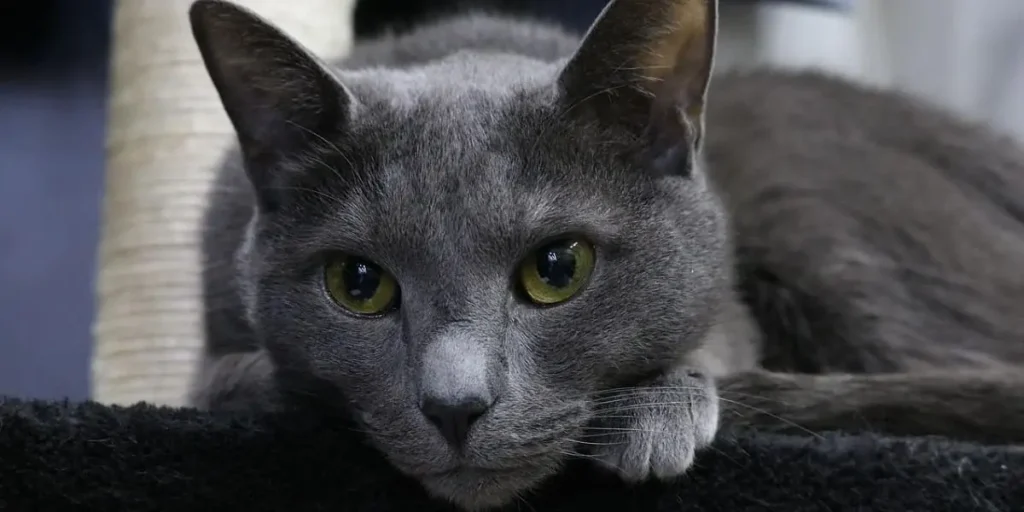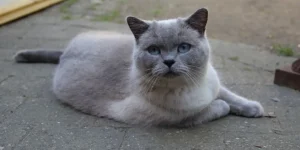Table of contents
Breed History
The Russian Blue is believed to come from the islands near the port of Arkhangelsk, in northern Russia, where cats developed thick coats to survive harsh winters. It reached England and Scandinavia around 1860 and was first exhibited at the Crystal Palace in London in 1875 as the Archangel Cat. By 1912, it was recognized as a distinct breed. British and Scandinavian breeders refined it further, and in the 1970s, Australian breeders crossed it with white Siberian cats to create the White Russian. The Nebelung is the medium-haired variety of the Russian Blue.
Physical Characteristics
The Russian Blue has a slim, graceful, and muscular body with a dense, double-layered coat. Its fur is fine, silky, and has a shimmering blue-silver hue. The head is triangular with a rounded muzzle, large almond-shaped green eyes, and tall ears. The tail tapers gently, and Nebelung cats have longer, flowing fur.
Temperament and Personality
The Russian Blue is deeply attached to its owner yet remains independent. It is affectionate but not overly demanding, calm, playful, and curious. While sociable with family, it can be shy with strangers. Once trust is established, it becomes a loyal and devoted companion.
Living Conditions
The Russian Blue prefers indoor living, valuing safety and calm environments. Although its coat protects it from cold weather, it thrives in cozy spaces equipped with scratching posts and climbing trees. It adapts perfectly to apartment life but also enjoys quiet rural settings.
Health
The Russian Blue is a generally healthy breed with no specific genetic predispositions. Routine vaccinations against rabies, feline distemper, coryza, and FeLV are recommended. This breed can gain weight easily, so a balanced diet and regular activity are essential. It is also known to be hypoallergenic for some allergy sufferers.
Life Expectancy
The Russian Blue typically lives between 13 and 20 years.
Grooming and Hygiene
The Russian Blue’s coat is low maintenance. A weekly brushing helps maintain its soft texture and reduce shedding. During shedding seasons, brush daily to minimize hairballs. Regularly trim claws, and clean ears with a vet-approved lotion to prevent infections.
Price and Budget
The purchase price of a Russian Blue ranges between $700 and$2,700. Annual maintenance costs vary from $430 to $1,070, depending on food quality and veterinary care.
Diet
A balanced diet is crucial for the Russian Blue’s well-being. High-quality proteins, moderate fats, vitamins, and minerals are key. Premium dry food is ideal, though homemade meals are possible if nutritionally complete. Always ensure access to fresh water and consult a veterinarian for dietary advice.
| Origin | Arkhangelsk, Russia |
| Coat Type | Short, fine, smooth (Nebelung: medium-long) |
| Temperament | Calm, loyal, reserved |
| Weight | Females: 2–3 kg (4.4–6.6 lb), Males: 3–5 kg (6.6–11 lb) |
| Life Expectancy | 13–20 years |
| Hypoallergenic | Yes |


